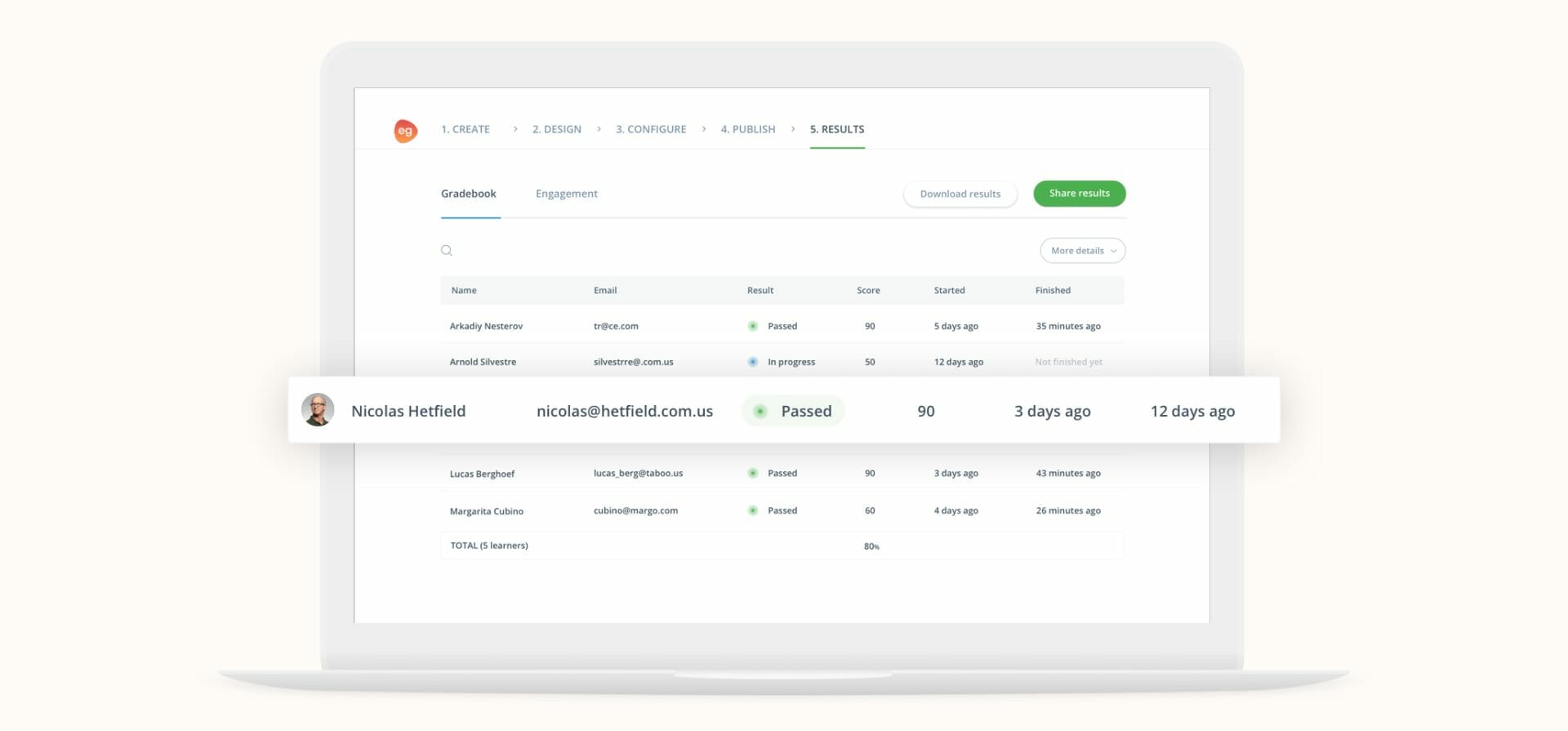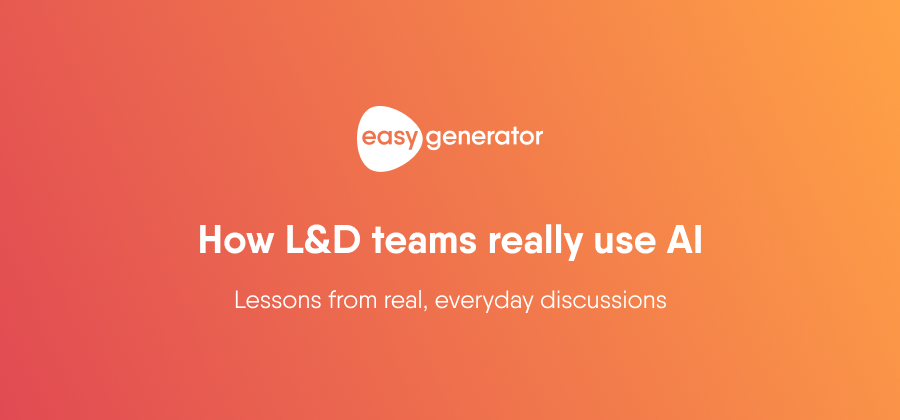Best ways to track results in e-learning
Creating e-learning courses isn’t just about developing engaging content. Once that content is out there, how do you know if your learners learned anything from it? This is where results tracking comes in.

Creating engaging, effective and didactically-sound courses is probably your main priority when it comes to creating e-learning. But tracking how your learners are doing comes a close second. After all, if your learners are failing the course or certain questions, then perhaps your course isn’t effectively imparting the key learnings.
As an authoring tool, Easygenerator helps you to easily create engaging and effective content, but it also helps you track your learners’ results. Here’s what you need to know.
How to track learner results in e-learning
How you track and trace learner results will also be key in choosing an LMS or authoring tool. There are four main format options for tracking and tracing learner results:
Track results manually
Tracking your course activity manually is never an ideal solution. This option only makes sense if you need minimal data and you have no other tracking options available. An easy way to track learner results manually is to provide a form or certificate at the end of your course which your learners can print. An administrator can then keep track which employees took your course and when.
While manual tracking is easy to implement and requires no technical setup, it can be tedious and is only practically feasible in a limited number of situations.
Track results automatically
If you’re ready to go beyond manual tracking, you need to look into acquiring a Learning Management System (LMS), Learning Experience Platform (LXP), or Learning Record Store (LRS). While an LMS and an LXP will provide you a platform to manage and take courses, an LRS is a results database. You can learn more about the differences between and LMS and an LXP in our complete guide. And learn more about what is an LRS here.
Depending on the software you choose, you’ll be able to track different types of learner results using different results tracking technology.
Track results with SCORM
The most well-known of all tracking and tracing options available on the market today is SCORM. SCORM is a standard within the world of e-learning and enables the tracking and tracing of learners’ results within an LMS.
Track results with xAPI
XAPI is short for ‘eXperience API’. The term API stands for a technique that enables software to exchange certain information. Where SCORM only looks at learner’s results, xAPI takes it one step further and looks at a learner’s experience. It will keep track of all learning experiences and store them within an LRS.
The big advantage of xAPI is that an LRS can exist both within the classic LMS as well as on its own. This allows for more flexibility on both the authors and the learners’ side. The course/quiz can be hosted on a blog, a website or even in an app on your smartphone.
Select the best authoring tool
Our experts put together the ultimate guide to help you select the best authoring tool for your e-learning needs.
Track results with CMI5
Cmi5 is the newest e-learning specification. It was officially released for production use in 2016 to complement xAPI, particularly when using xAPI in a traditional e-learning environment. It works as a set of rules providing all the options of both SCORM and xAPI merged into one.
Choosing the best way to track results in e-learning
Ultimately, the best way to track your learner results in e-learning depends on a couple of factors:
- Number of learners: If you’re expecting to share your course with a large number of learners, you’ll need to opt for an automated results tracking option.
- Your tracking goals: Do you need to simply keep track of course completion? Or do you need to know more about how your learners interacted with your course? This will help you narrow down
- Available e-learning software: Does your organization use an LMS or LXP? Do you have access to a technical expert who can set up the tracking methods to meet your needs?
How can you track results in Easygenerator?
If you’re considering using Easygenerator as your authoring tool, it’s useful to know which results tracking options you have.
You can track results within the Easygenerator app in the Gradebook, via your custom LRS, or by publishing your Easygenerator course to your LMS. All Easygenerator courses are SCORM-compliant. As standard, Easygenerator uses xAPI for tracking and tracing.
Watch this short video for a quick overview of how to track results in Easygenerator:




